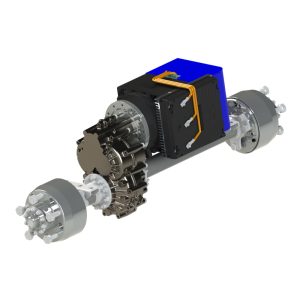Electric vehicles (EVs) have revolutionized the automotive industry with their efficiency and sustainability. A key component contributing to their performance is the transaxle transmission. Integrating a transaxle transmission into electric powertrains offers numerous benefits, enhancing the overall driving experience and vehicle efficiency.
Improved Power Distribution
Enhanced Traction and Stability
The transaxle design in electric powertrains ensures optimal distribution of power to the wheels. This setup provides better traction and stability, especially in adverse driving conditions. Unlike traditional transmissions, the transaxle distributes power more evenly, resulting in a smoother and safer ride.
Reduced Weight and Space Requirements
Compact Design Efficiency
Incorporating a transaxle transmission significantly reduces the overall weight and space requirements of the vehicle. This compact design not only improves vehicle dynamics but also increases the available cabin space. The weight reduction directly impacts the efficiency, as lighter vehicles consume less energy, extending the range of the EV.
Enhanced Performance
Superior Acceleration and Handling
Electric vehicles with transaxle transmissions exhibit superior acceleration and handling. This is due to the direct power delivery and reduced mechanical losses. The immediate response of the electric motor, combined with the efficient power transmission of the transaxle, offers a more responsive and engaging driving experience.
Increased Energy Efficiency
Optimal Power Utilization
The integration of a transaxle in electric powertrains leads to optimal power utilization, enhancing the overall energy efficiency. This efficiency translates into longer driving ranges on a single charge, making EVs more practical for longer journeys. Additionally, the reduced energy consumption contributes to lower operating costs.
Cost-Effective Maintenance
Lower Long-Term Expenses
Electric vehicles with transaxle transmissions generally require less maintenance compared to those with conventional transmissions. The simplicity of the transaxle design means fewer moving parts, which reduces the likelihood of mechanical failures. This leads to lower long-term maintenance costs, offering significant savings over the vehicle’s lifespan.

Conclusion
The integration of a transaxle transmission into electric powertrains offers a multitude of benefits, from improved power distribution and reduced weight to enhanced performance and energy efficiency. These advantages not only improve the driving experience but also contribute to the sustainability and cost-effectiveness of electric vehicles. As the automotive industry continues to evolve, the role of transaxle transmissions in electric powertrains will become increasingly important, paving the way for more advanced and efficient electric vehicles.